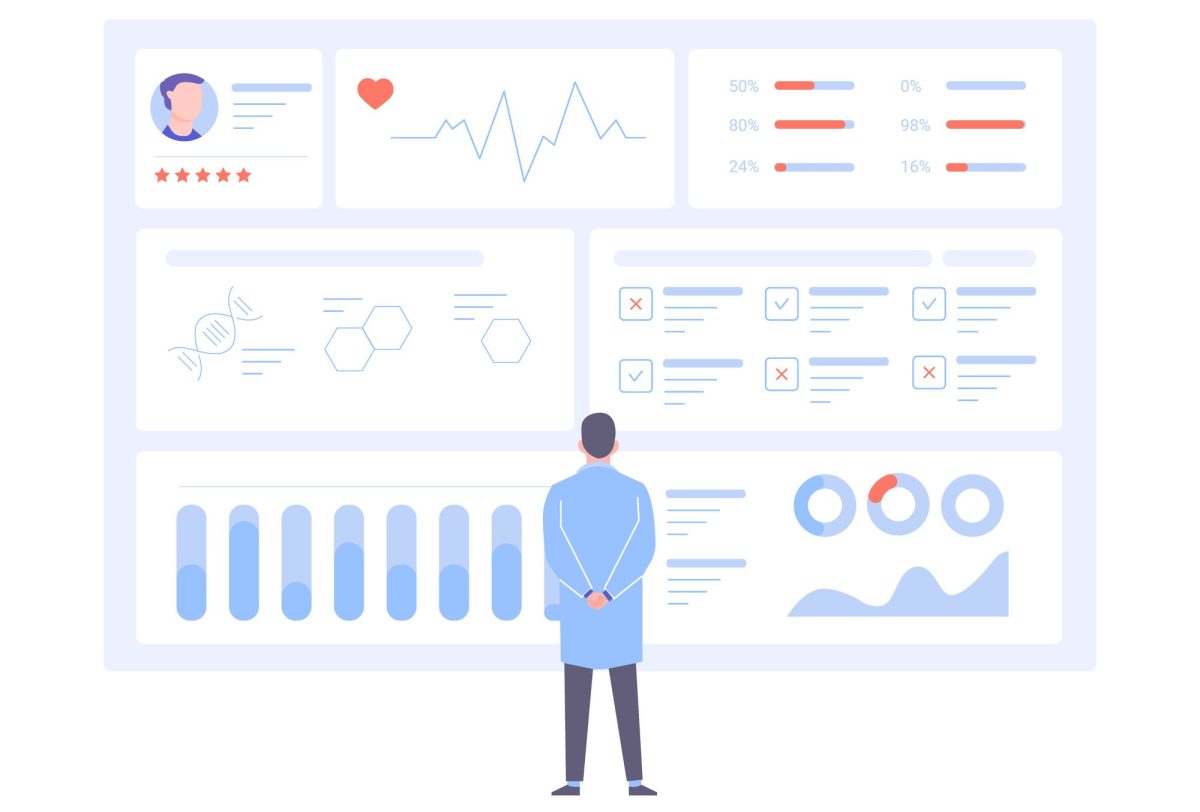How to Sell an App: Your Complete Guide to a Profitable Mobile App Exit

You’ve poured months – maybe years – into building your mobile app. Now you’re ready to cash out, move on to your next project, or simply redirect your resources. Selling a mobile app can net you anywhere from a few thousand dollars to millions, depending on your app’s performance, user base, and growth trajectory. The global app marketplace is thriving, with thousands of entrepreneurs, publishers, and investors actively hunting for profitable apps to acquire.
But here’s the challenge: most developers don’t know where to start. Should you list on a marketplace? Pitch directly to companies? How do you even value your app? This guide walks you through everything you need to know about selling your app in 2025, from valuation formulas to choosing the right platform, preparing your documentation, and closing the deal.
Why smart developers are choosing to sell their apps right now
The decision to sell mobile app assets isn’t about giving up – it’s strategic business thinking. Thousands of developers successfully exit their apps each year, unlocking capital that would otherwise remain tied up in slowly declining projects.
Consider this scenario: your app generates $3,000 monthly in net profit. It’s stable but plateaued. By selling at a conservative 24-month multiple, you pocket $72,000 upfront – capital you can immediately deploy into a more promising project or investment. That’s strategic resource allocation.
Common reasons developers sell apps include: Project fatigue after years of maintenance and updates, stagnant growth despite optimization efforts, life changes requiring immediate capital, desire to focus full-time on newer ventures, market saturation making future growth difficult, and burnout from customer support demands.
Mobile apps have become legitimate investment assets. Publishers and aggregators actively seek profitable apps with proven revenue streams, treating them like real estate or stocks in a diversified portfolio. This means sellers now have access to serious buyers with capital ready to deploy.
The timing factor matters significantly. Apps typically sell for maximum value when they’re at peak performance or showing consistent profitability – not after months of decline. Revenue trends heavily influence valuation, so selling during a plateau or slight upward trajectory yields better multiples than waiting until income drops noticeably.
Where to sell your app: marketplaces, aggregators, and direct sales
Finding the right selling channel dramatically impacts your timeline, final price, and transaction security. Each option serves different seller needs and app types.
App marketplaces: the most accessible option
Online marketplaces connect sellers with diverse buyer pools, from individual entrepreneurs to established publishers. These platforms handle listing visibility, basic vetting, and often provide escrow services for secure transactions.
AppWill specializes exclusively in mobile apps and games across Android, iOS, Amazon, Steam, HTML5, and Yandex platforms. With 2,500+ verified apps in their marketplace ranging from $800 to $900,000+, they provide free app valuation, direct buyer matching through their global publisher network, and a secure 50/50 split payment escrow system. Their fastest deal closed in just 3 hours, with typical transactions completing within one week. Full source code transfers and personalized account management make them particularly attractive for game developers and studios.
Flippa remains the largest general marketplace, with over $375 million in total transactions and 17,000 new buyers joining monthly. Their app-specific section allows iOS, iPadOS, and Android listings with transparent pricing starting at $29 for basic packages and 3-10% success fees. Flippa’s strength lies in high traffic volume, though this means more tire-kickers alongside serious buyers.
Empire Flippers takes a curated approach, vetting both sellers and buyers more rigorously. With $280 million in sales completed and an impressive 84% listing success rate, they cater to higher-quality apps with established revenue. Expect 2-15% commission rates and a more hands-on brokerage experience. Their buyers typically have deeper pockets and move faster on qualified opportunities.
Acquire focuses specifically on SaaS and mobile apps with strong metrics. Their platform boasts 500,000+ registered buyers and emphasizes quick transactions, with average sale times around 90 days. The M&A advisory component helps optimize deal structures for both parties.
App aggregators: direct acquisition partners
Aggregators purchase apps directly rather than listing them, streamlining the process significantly. Companies like Bluethrone acquire profitable apps meeting specific criteria – typically $5,000+ monthly revenue and 5,000+ downloads minimum. They consolidate multiple apps into managed portfolios, often paying competitive multiples for quality assets.
The advantage is speed and certainty. No waiting for buyer interest or managing multiple negotiations. The tradeoff is less competitive bidding pressure, which might result in slightly lower valuations than open marketplace auctions could achieve.
Direct sales to companies
Selling directly to publishers, competitors, or strategic acquirers can yield premium valuations when your app fills a specific gap in their portfolio. This approach requires networking at industry events like App Promotion Summit, MAU Vegas, or Mobile World Congress Barcelona.
Direct sales work best for apps with unique technology, loyal user bases in specific niches, or complementary features to a target company’s existing products. Expect longer sales cycles and complex negotiations, but potentially higher multiples – especially if multiple interested parties create bidding competition.
Brokers and M&A advisors like FE International handle premium apps, typically those generating significant revenue or commanding valuations above $100,000. They provide end-to-end transaction management, buyer sourcing, negotiation expertise, and legal support – all for commission rates between 10-15% of the sale price.
How to value your app: understanding the numbers buyers care about
App valuation isn’t guesswork. Buyers use established formulas based on financial performance, growth metrics, and risk assessment. Understanding these calculations helps you price competitively while maximizing your return.
The standard valuation formula
Most mobile apps sell for 2-4x annual net profit or 24-48x monthly net profit. This multiple approach dominates because it’s simple, comparable across apps, and reflects realistic ROI expectations for buyers.
Here’s how it works in practice: An app generating $4,000 monthly in net profit has annual profit of $48,000. At a 3x multiple, the valuation lands at $144,000. At a conservative 2x, it’s $96,000. At an aggressive 4x for fast-growing apps, $192,000.
Net profit matters – not gross revenue. Calculate accurately by subtracting all real costs: platform commissions (Apple takes 15-30%, Google takes 15-30%), user acquisition costs and advertising spend, server and infrastructure expenses, third-party service fees, contractor or development costs, and support and operational overhead.
For a practical example: Your app generates $10,000 monthly in revenue. After Apple’s 15% commission, you net $8,500. Subtract $2,000 in ad spend, $500 in server costs, and $500 in miscellaneous expenses. True monthly net profit is $5,500, not $10,000. That’s a massive difference when applying multiples – $132,000 valuation at 24x versus potentially inflated expectations.
What drives higher multiples
Not all apps sell at the same multiple. Several factors push valuations toward the high end of the range: Consistent month-over-month revenue growth trends, subscription-based monetization with high retention rates, low customer acquisition costs relative to lifetime value, diverse revenue streams reducing single-point failure risk, modern technology stack easy to maintain and scale, strong organic traffic requiring minimal paid acquisition, established brand recognition and positive user reviews, and thorough documentation making handoff seamless.
Apps stuck at flat or declining revenue typically land at 2-2.5x multiples. Those showing growth potential command 3-4x, especially with clear expansion opportunities buyers can execute.
Alternative valuation methods
For apps without consistent profit history, buyers may use user-based valuation – calculating value per active user. A meditation app with 10,000 monthly active users might value each user at $5-15 depending on engagement and monetization potential, yielding a $50,000-$150,000 valuation range.
Revenue-only multiples appear occasionally for pre-profit apps showing strong traction. A new app generating $8,000 monthly revenue but still operating at breakeven might sell for 4-6 months of revenue ($32,000-$48,000) to a buyer confident they can optimize costs.
SaaS-style apps with recurring revenue often use discounted cash flow (DCF) models, projecting future cash flows and discounting to present value. This sophisticated approach appears in higher-value transactions with strong predictability.
Essential metrics every serious buyer will scrutinize
Raw revenue numbers tell only part of your app’s story. Sophisticated buyers dig deep into engagement, retention, and efficiency metrics to assess real value and future potential.
Daily and monthly active users
DAU (Daily Active Users) and MAU (Monthly Active Users) measure your app’s stickiness. Buyers calculate the DAU/MAU ratio to understand engagement frequency. A social app with 5,000 DAU and 20,000 MAU has a 25% ratio – meaning the average user opens the app about 7-8 days per month. Gaming apps should target 15-20% minimum, while utility apps might see lower ratios but compensate with longer session times.
Steady or growing MAU indicates healthy product-market fit. Declining MAU raises immediate red flags about user satisfaction, market saturation, or competitive pressure.
Retention rates: the ultimate test
Retention rate measures what percentage of users return after initial download. Industry benchmarks vary, but strong apps typically see D1 retention (Day 1, next-day return) around 40-50%, D7 retention (Day 7) around 20-30%, and D30 retention (Day 30) around 10-15%.
Subscription apps require even stronger retention because monetization depends on it. An app losing 10% of subscribers monthly (90% monthly retention) has an average subscriber lifespan of just 10 months. At 95% retention, that extends to 20 months – doubling lifetime value.
Churn rate, retention’s inverse, tells buyers how quickly your user base leaks. High churn requires expensive ongoing acquisition just to maintain revenue levels, diminishing appeal for buyers seeking sustainable assets.
Revenue efficiency metrics
ARPU (Average Revenue Per User) shows monetization effectiveness. Calculate by dividing total revenue by active users. An app earning $15,000 monthly from 10,000 MAU has $1.50 ARPU. Gaming apps often target $2-5 ARPU, while productivity tools might see $0.50-2.00.
LTV (Lifetime Value) estimates total revenue generated per user over their entire lifecycle. For subscription apps, multiply average monthly subscription price by average subscriber lifetime in months. A $9.99/month meditation app with 15-month average retention yields roughly $150 LTV.
CAC (Customer Acquisition Cost) reveals marketing efficiency by dividing total marketing spend by new users acquired. Healthy apps maintain LTV at least 3x higher than CAC. An LTV of $150 paired with $60 CAC is attractive. LTV of $150 with $140 CAC signals unsustainable unit economics.
Growth trajectory and seasonality
Buyers analyze revenue trends over 6-12 months minimum. Apps showing 5-10% month-over-month growth command premium valuations because buyers see momentum they can accelerate. Flat performance gets neutral multiples. Declining performance often results in offers 30-50% below initial asking prices.
Seasonal patterns matter too. A fitness app earning $8,000 monthly might spike to $15,000 in January then decline to $5,000 by summer. Buyers factor this volatility, either averaging seasonal variations or discounting valuations to account for uncertainty.
Preparing your app for sale: documentation and optimization
Professional presentation separates serious sellers from amateurs. Buyers expect comprehensive documentation, verified metrics, and transparent disclosure – just like selling a house requires inspections and clean title.
Financial documentation requirements
Compile complete profit and loss statements covering at least 6 months, preferably 12-24 months. Include monthly breakdowns showing revenue sources, all expenses by category, and net profit. Screenshots from app store dashboards, payment processors, and analytics platforms verify these figures.
Revenue breakdown by source clarifies your monetization model: in-app purchases percentage and growth trends, subscription revenue and retention rates, advertising income and fill rates, sponsorships or licensing revenue, and any other income streams.
Buyers need to see the full financial picture, including hidden costs you might overlook. Document server hosting fees, third-party API or service subscriptions, contractor or freelancer expenses, marketing and user acquisition costs, and customer support tools or services.
Analytics access and user data
Prepare comprehensive analytics demonstrating app health: Google Analytics or Firebase data showing user behavior, app store analytics with download trends, retention cohort analysis, session length and frequency data, funnel conversion rates for key actions, and geographic distribution of users.
Export key reports as PDFs or screenshots rather than relying solely on live dashboard access. This protects your account security while providing buyers everything they need for due diligence.
User sentiment matters significantly. Compile app store reviews and ratings trends, user feedback and feature requests, support ticket volume and common issues, and social media mentions or community discussions. Address any negative patterns proactively in your listing rather than letting buyers discover them independently.
Source code and technical documentation
Clean, well-documented source code dramatically increases appeal and valuation. Buyers want confidence they can maintain and improve the app without reverse-engineering your work.
Provide a comprehensive technical overview including development framework and languages used, architecture and database structure, third-party integrations and API dependencies, development environment setup instructions, and current technical debt or known issues.
Create a README file explaining code organization, key files and directories, how to build and deploy, testing procedures, and any credentials or API keys needed (provide safely through escrow, never in public repositories).
Buyers increasingly value modern, maintainable technology stacks. Apps built on outdated frameworks or abandoned libraries face valuation discounts of 20-40% due to future migration costs and security concerns.
Legal and intellectual property clarity
Verify you actually own everything you’re selling. IP issues kill deals instantly. Document that you own or have proper licenses for all code, graphics, music, and content, all third-party libraries comply with licensing terms, no trademark or copyright disputes exist, and you have rights to transfer app store accounts and associated assets.
Contracts and agreements should be ready: terms of service and privacy policy, any existing user agreements, third-party vendor contracts, and employment or contractor agreements clarifying IP ownership.
For apps using licensed content or APIs, confirm whether these agreements allow ownership transfer. Some licenses are non-transferable, requiring renegotiation as part of the sale.
The app selling process: from listing to closing
Understanding the typical sales timeline helps set realistic expectations and plan your exit strategy effectively.
Creating a compelling listing
Your app listing is your sales pitch. Strong listings include: A clear, benefit-focused title emphasizing what the app does and its value proposition, compelling description highlighting revenue, user base, growth potential, and unique features, complete financial metrics with trends over time, detailed traffic and engagement statistics, and high-quality screenshots of the app interface and analytics dashboards.
Transparency builds trust and speeds transactions. Disclose known issues upfront rather than hiding them. A minor technical debt issue disclosed honestly beats a surprised buyer discovering it during due diligence and losing confidence.
Price strategically based on your valuation research. Starting slightly high (10-15% above target) leaves negotiation room, but wildly overpriced listings attract zero serious interest. Most platforms like AppWill offer free valuation services – use them to calibrate your expectations before listing.
Due diligence expectations
Serious buyers conduct thorough due diligence before committing capital. Expect 7-14 days of detailed review including verification of revenue claims through direct dashboard access, code review for quality and technical debt assessment, analytics confirmation of user metrics, review of legal documents and IP ownership, and assessment of operational complexity and handoff requirements.
Be responsive during this phase. Buyers with multiple opportunities under consideration choose sellers who provide quick, complete answers to questions. Delays or evasiveness trigger suspicion and often kill deals.
Prepare a due diligence package with everything organized: financial spreadsheets with formulas visible, analytics reports for the past 12 months, technical documentation and code repository access, legal documents and agreements, and standard operating procedures for maintenance and support.
Negotiation and deal structure
Initial offers often come in 10-20% below asking price. This is normal negotiation, not an insult. Counter-offers should be data-driven: justify your valuation with comparable sales, growth trends, or unique features rather than emotional attachment.
Beyond price, negotiate deal terms affecting your risk and responsibilities: payment structure (lump sum vs. installments), earn-outs based on future performance, training and transition support expectations, non-compete clauses and duration, and liability protections for pre-sale issues.
Escrow services protect both parties. Reputable marketplaces like AppWill use structured escrow releasing funds in stages: initial payment held by escrow (100% of deal), app store account transferred to buyer, first release to seller (50% of deal amount), source code and documentation transferred, final release after buyer confirmation (remaining 50%).
This split payment model ensures sellers receive compensation while buyers verify they’re getting exactly what was promised.
Technical transfer process
App store transfers follow specific platform requirements. Apple App Store transfers require both parties to have paid developer accounts, apps must meet all current App Store guidelines, apps with iCloud integration face restrictions, the Bundle ID transfers permanently, and ratings and reviews transfer with the app (a significant value component).
Google Play transfers also have requirements: both accounts must be in good standing, you transfer the entire developer account or use the new app transfer feature, reviews and ratings typically transfer, and apps using certain Google services may need reconfiguration.
Plan for 1-2 weeks technical handoff including source code repository transfer, credentials and API keys (handled securely through escrow), documentation walkthroughs, server and hosting access transfers, third-party service account transfers, and payment processor account transitions.
Provide 30-60 days of email support post-sale for technical questions unless negotiated otherwise. This transition support reduces buyer risk and often justifies higher valuations.
Platform-specific guidance for iOS and Android apps
iOS and Android apps have distinct characteristics affecting their marketability and valuation.
iOS apps: higher revenue but stricter requirements
iOS apps typically command higher valuations because iPhone users spend more on apps – roughly 2-3x more than Android users on average. The premium user base and higher willingness to pay for subscriptions and in-app purchases make iOS apps particularly attractive to buyers.
However, Apple’s transfer requirements are strict. Apps must comply with current guidelines even if grandfathered under old rules when originally approved. Apps using deprecated APIs or outdated design patterns may require updates before transfer is possible.
Subscription apps on iOS provide especially attractive recurring revenue when retention is strong. Buyers love predictable monthly income, and Apple’s subscription tools make retention tracking straightforward. Apps with 85%+ monthly subscriber retention command premium multiples of 3-4x annual profit.
Android apps: larger user base and flexibility
Android’s massive global market share means higher user numbers even if individual user revenue lags iOS. Apps with millions of users on Android attract buyers focused on scale and data rather than pure revenue maximization.
Google Play’s transfer process offers more flexibility than Apple, with options to transfer individual apps rather than entire developer accounts. This makes it easier to sell one app from a portfolio while retaining others.
Ad-supported monetization works particularly well on Android given the huge user volumes. Apps earning $0.05-0.15 per user monthly through ads can generate substantial income from millions of users. Buyers focused on advertising arbitrage often specifically seek high-traffic Android apps.
Cross-platform apps: additional value
Apps available on both iOS and Android typically sell for 10-20% more than single-platform equivalents, assuming similar performance on each. The combined user base, diversified platform risk, and growth potential make cross-platform apps more attractive.
However, buyers scrutinize whether both platforms perform well. An iOS app earning $5,000 monthly with an Android version generating just $200 monthly provides minimal additional value – the Android side might even be seen as a distraction.
Real app sales: case studies and success stories
Learning from actual transactions helps calibrate your expectations and strategy.
Casual gaming app: $180,000 exit
A solo developer built a simple puzzle game over four months, spending roughly $5,000 on art assets and minimal marketing. The game gained organic traction through app store optimization, reaching 2,000 daily active users and generating $6,000 monthly net profit through ads and occasional IAP.
After 18 months of stable performance, the developer listed on a marketplace for $162,000 (27x monthly profit). A mobile gaming publisher acquired it for $180,000 (30x multiple), seeing potential to integrate their existing ad mediation and cross-promotion systems.
Key success factors: Clean code and thorough documentation, consistent 6-month revenue history, strong organic user acquisition (low CAC), simple maintenance requirements, and responsive negotiations with quick due diligence answers.
Productivity app subscription: $240,000 exit
A two-person team spent a year building a specialized project management tool for freelancers. They gained 1,500 paying subscribers at $12.99/month, generating $19,485 monthly revenue and $12,000 net profit after expenses.
The app sold for $240,000 (20x monthly net profit) to a larger productivity software company looking to expand their freelancer offerings. The multiple exceeded typical ranges because retention was exceptional at 92% monthly and the target company saw clear upsell opportunities to their existing suite.
Key success factors: Subscription model with excellent retention, specific niche with minimal competition, modern React Native codebase, detailed customer personas and market research, and strategic acquirer seeing portfolio fit.
Utility app: quick $15,000 sale
A developer created a simple photo editing tool as a side project, never expecting significant revenue. Surprise traction brought 50,000 downloads and $500-800 monthly through ads.
Rather than ongoing maintenance for modest income, they listed for $12,000 (18x monthly profit). An app aggregator bought it within two weeks for $15,000, seeing easy integration into their ad optimization network.
Key success factors: Realistic pricing based on modest revenue, willingness to sell quickly rather than hold out, complete documentation despite being a side project, and clean transfer process.
Advanced strategies: selling app ideas and increasing value quickly
Not every app needs to be fully developed to sell. And existing apps can sometimes be optimized quickly for better valuations.
Can you sell just an app idea?
The short answer: rarely, and not for much money. Companies like Apple, Google, and Facebook don’t accept unsolicited app ideas, despite persistent myths. They have thousands of internal ideas and legal risks around outside submissions.
However, you can sell validated concepts with early traction: mockups or interactive prototypes (built in Figma, Bubble, or Adalo), waiting list signups or pre-launch interest (500+ emails demonstrating demand), detailed market research and business plan, and MVP (Minimum Viable Product) with early users.
An app idea with 2,000 waitlist signups, professional mockups, and documented market research might sell for $5,000-$25,000 to a developer or small studio willing to build it. This is orders of magnitude less than a functioning app with revenue, but possible for exceptional concepts in hot markets.
Quick wins to boost valuation
If you’re 2-3 months away from listing, several optimizations can increase your selling price significantly: Improve app store optimization (ASO) by testing new keywords, screenshots, and descriptions. Traffic increases of 20-30% from ASO signal growth to buyers and boost metrics before listing.
Reduce churn by fixing obvious UX issues or implementing retention best practices like onboarding improvements and re-engagement notifications. Moving retention from 85% to 90% monthly can add 15-20% to your valuation.
Document everything even if your code is messy. Buyers discount apps they can’t understand. Spending 20-40 hours on comprehensive documentation can add $10,000-$30,000 to valuations above $100,000 by reducing perceived risk.
Clean up your revenue model by removing low-performing revenue streams and focusing on what works. An app earning $4,000 from ads and $200 from subscriptions should probably eliminate the distraction and focus on the core 95% revenue source. Simplicity appeals to buyers.
Licensing and partnership alternatives
Sometimes you don’t need to sell outright. White-label licensing allows you to sell customized versions of your app to multiple clients while retaining ownership. A fitness app might license versions to gyms for $2,000-$5,000 each plus monthly fees.
Revenue share partnerships with publishers let you keep ownership while they handle marketing and user acquisition, splitting profits 50/50 or 60/40. This works well for apps with proven product-market fit but limited marketing resources.
These alternatives provide ongoing income without the finality of a complete sale, though they require continued involvement versus the clean exit of selling.
Legal and tax considerations for app sales
App sales are business transactions with real legal and tax implications. Skip this at your financial peril.
Contracts and agreements
Every app sale needs a formal Asset Purchase Agreement detailing exactly what’s being sold: intellectual property rights and source code, app store accounts and associated logins, user data (where legally transferable), business name and trademarks, contracts with vendors or service providers, and documentation and training materials.
Include representations and warranties where you affirm revenue claims are accurate, you own everything being sold, no known legal issues exist, and no material facts have been withheld.
Non-disclosure agreements (NDAs) protect both sides during due diligence. Sellers share sensitive data; buyers share strategic plans. Standard NDAs ensure confidentiality.
Tax implications vary by location
In most jurisdictions, app sales trigger capital gains tax rather than ordinary income tax – often a significant advantage. In the US, long-term capital gains rates (for assets held over one year) range from 0-20% federally versus ordinary income rates up to 37%.
However, some portion might be taxed as ordinary income if you sold apps frequently or the IRS determines it’s a business rather than investment asset. Consult a tax professional familiar with digital asset sales.
Depreciation recapture can complicate things if you previously deducted development costs. You may owe taxes on amounts previously deducted even if the sale price is modest.
International sales face additional complexity with potential withholding taxes, treaty considerations, and currency exchange reporting.
Data privacy and transfer restrictions
Apps with user data face strict requirements under GDPR (Europe), CCPA (California), and similar laws worldwide. You generally cannot transfer personal user data without explicit consent or legal basis.
Most app sales structure data transfer as “business succession” which allows transfer under data protection laws. However, you should update privacy policies noting potential ownership changes and provide users notice where required.
Anonymized or aggregated data typically transfers freely without consent requirements. This includes analytics showing aggregate user behavior without personally identifying information.
Why choose AppWill for your app sale
Selling your app should be straightforward, secure, and profitable. AppWill specializes exclusively in mobile apps and games, bringing focused expertise and a global network of serious buyers to every transaction.
Verified marketplace with 2,500+ apps
Browse or list in a curated ecosystem of quality mobile applications across every major platform: Android, iOS, Amazon, Steam, HTML5, and Yandex. Every listing undergoes verification to ensure accuracy and legitimacy, protecting both buyers and sellers from fraud and misrepresentation.
Price points range from $800 starter apps to premium games worth $900,000+, accommodating sellers at every level. Whether you’re exiting a side project or selling a studio’s flagship title, qualified buyers are actively searching.
Free professional app valuation
Wondering what your app is really worth? Get a free, no-obligation valuation from AppWill’s experts who analyze comparable sales, current market trends, your revenue and user metrics, growth trajectory, and technical factors affecting value.
This independent assessment helps you price competitively from day one, avoiding the trap of overpricing (which kills interest) or underpricing (which leaves money on the table). The valuation process also identifies quick optimization opportunities to boost your selling price.
Fast, secure transactions with escrow protection
Time kills deals. AppWill’s average transaction closes in one week, with the fastest deal completing in just three hours. This speed comes from their extensive global network connecting sellers directly with interested buyers rather than hoping the right buyer stumbles across a listing.
The 50/50 split payment system protects both parties: Buyers pay 100% to secure escrow upfront, then sellers receive 50% when the app store account transfers successfully, with the remaining 50% released after source code and documentation transfer is verified.
This structured approach eliminates the risk of buyers disappearing after receiving assets or sellers vanishing after receiving payment.
Global buyer network from the USA to Pakistan
AppWill’s relationships with publishers, investors, and aggregators worldwide mean they often know exactly who’s seeking apps in your niche and budget range. Rather than waiting months for organic discovery, your app gets targeted exposure to qualified buyers immediately.
Their team proactively matches sellers with relevant buyers based on genre, monetization model, platform, and price range – dramatically shortening time-to-sale.
Comprehensive support and guidance
Professional account managers guide you through every step: preparing documentation and optimizing your listing, negotiating offers and deal terms, managing due diligence and information requests, coordinating the technical transfer process, and resolving any issues that arise.
This hands-on approach removes stress and uncertainty, especially for first-time sellers unfamiliar with the app M&A process.
Common mistakes that kill app sales
Avoid these pitfalls that cause deals to fall through or leave money on the table.
Overpricing based on emotional attachment
Your app might feel like it’s worth millions, but buyers only care about financial metrics and growth potential. Overpricing by 50-100% beyond reasonable multiples results in zero serious offers and wasted months on the market.
Price based on data, not feelings. Get multiple valuations from different sources and find the realistic range. You can always negotiate up slightly but starting too high brands you as unrealistic.
Hiding problems during due diligence
That undisclosed traffic drop last quarter? Buyers will find it. Attempting to hide negative trends or technical issues destroys trust and kills deals even when the problems themselves are minor and fixable.
Disclose issues proactively with explanations. “Revenue dipped 15% in December due to iOS 17 policy changes, but recovered to previous levels by February” shows transparency and problem-solving rather than dishonesty.
Poor documentation and disorganized assets
Buyers walking away from profitable apps because the code is incomprehensible or the financial records are disorganized happens more than you’d think. The perceived risk of buying a mess outweighs the potential reward.
Spend the time organizing your assets professionally. It’s the difference between a 2x and 3.5x multiple on the same underlying business.
Unrealistic timelines and impatience
Expecting to list on Monday and close by Friday rarely works even with fast platforms. Budget 2-8 weeks from listing to closed deal for straightforward transactions, longer for complex or high-value apps.
Desperation pricing from impatience costs you money. Buyers smell urgency and low-ball. If you need money within two weeks, reconsider whether selling is the right option.
Neglecting buyer communication
Slow responses to buyer questions signal you’re not serious or hiding something. Buyers with multiple opportunities under review simply move to more responsive sellers.
Respond to inquiries within 24 hours during due diligence. Provide complete answers backed by documentation. Your responsiveness directly correlates with successful closing rates.
Frequently asked questions about selling mobile apps
How long does it take to sell an app?
Typical timelines range from 1-12 weeks depending on pricing, app quality, and chosen platform. Well-priced apps with strong documentation on active marketplaces like AppWill average 2-4 weeks from listing to closing. Overpriced or poorly documented apps can sit for months without serious offers.
What’s the minimum revenue needed to sell an app?
No strict minimum exists, but apps generating under $500 monthly face limited buyer interest except from aggregators buying portfolios. The $1,000-$3,000 monthly range attracts individual buyers and smaller publishers. Above $5,000 monthly you’ll see serious competition from multiple buyers.
Can I sell an app that’s losing money?
Apps operating at a loss rarely sell for significant amounts unless they demonstrate huge growth potential or valuable user bases. However, apps with strong traffic but poor monetization sometimes attract buyers confident they can optimize revenue. Expect low valuations, often 2-6 months of revenue rather than profit multiples.
Do I need a lawyer to sell my app?
For sales under $50,000, many sellers use standard contracts from marketplaces without additional legal counsel. Above $50,000, consultation with a lawyer familiar with digital asset sales is wise. Above $150,000, dedicated legal representation becomes essential to protect your interests and ensure tax optimization.
What happens to my app after selling?
The buyer owns it completely and can modify, rebrand, or even discontinue it. Most buyers continue operating profitable apps, often integrating them into larger portfolios. Some buyers aggressively optimize monetization or user acquisition. You typically have no say post-sale unless you negotiate ongoing consultation as part of the deal.
Can I sell my app if it violates current app store policies?
Apps in violation face rejection during transfer. Apple and Google review transferred apps against current policies even if they were grandfathered previously. Fix policy violations before listing to avoid deal failures during the transfer process.
Should I keep running ads while selling my app?
Maintain normal operations throughout the sales process. Stopping ads causes revenue drops that concern buyers and tank valuations. Continue marketing at previous levels to demonstrate consistent performance. You can discuss optimization strategies with buyers but avoid changes during due diligence.
How do buyers verify my revenue claims?
Expect to grant temporary read-only access to app store dashboards, payment processor accounts, and analytics platforms. Serious buyers also request bank statements showing deposits matching claimed revenue. Screenshots alone aren’t sufficient for deals above $20,000.
Can I sell part of my app business?
Apps generally sell as complete units including all assets and rights. However, you can structure deals with earn-outs where you receive additional payments based on future performance, or retain certain assets like the brand name while selling the core app. Creative deal structures work when both parties see mutual benefit.
What if I can’t transfer my developer account?
Apple and Google both now support app-only transfers without transferring entire developer accounts, though account transfers remain simpler. If you have multiple apps and want to sell just one, use the app transfer features. Discuss technical transfer options with your marketplace or buyer early in negotiations.
Ready to sell your app? Start with a free valuation
The mobile app market is active, liquid, and full of buyers seeking proven assets to acquire. Whether you’re ready to exit your passion project, cash out your studio’s hit game, or simply redirect resources to more promising opportunities, now is an excellent time to sell.
Start by getting a professional valuation to understand what your app is genuinely worth in today’s market. AppWill’s free valuation service provides realistic pricing based on current comparables, your specific metrics, and buyer demand trends.
Browse the AppWill marketplace to see 2,500+ verified apps and games currently available. Understanding what’s selling and at what prices helps calibrate your expectations and strategy. Filter by platform, category, price range, or development technology to find comparable apps in your niche.
List your app for sale when you’re ready. AppWill’s team handles listing creation, buyer matching, negotiation support, and secure escrow transactions from start to finish. With an average closing time of one week and personalized guidance throughout, they’ve streamlined what used to be a complex, risky process.
The decision to sell is never simple, but thousands of developers successfully exit their apps each year at attractive valuations. With the right preparation, realistic pricing, and the right selling platform, your app can join them – putting capital in your hands for whatever comes next in your entrepreneurial journey.
The post How to Sell an App: Your Complete Guide to a Profitable Mobile App Exit appeared first on Entrepreneurship Life.



















:quality(85):upscale()/2023/09/18/918/n/1922398/a1136b676508baddc752f5.20098216_.jpg)
:quality(85):upscale()/2025/10/09/670/n/1922283/00b944c868e7cf4f7b79b3.95741067_.jpg)
:quality(85):upscale()/2025/10/15/765/n/1922398/29c37a6e68efd84bb02f35.49541188_.jpg)
:quality(85):upscale()/2025/09/09/891/n/1922283/7222624268c08ccba1c9a3.01436482_.png)




















